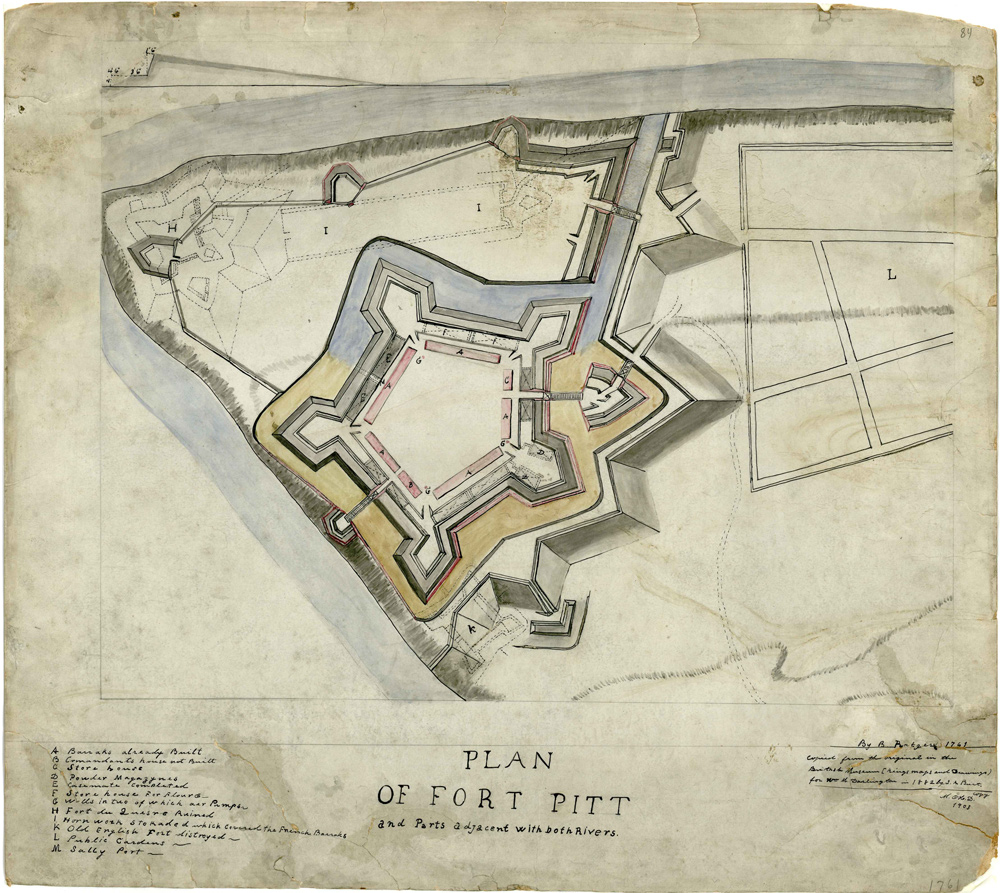Meriwether Lewis is in Pittsburgh having a military barge built prior to departure down the Ohio River—perhaps at Fort Fayette. Remnants of two earlier forts—Pitt and Duquesne—can still be seen.
Plan of Fort Pitt and Parts adjacent with both Rivers.
By Bernard Ratzer, 1761
Copied from the original in the British Library (Kings’ maps and drawings) for Wm. Darlington by J. A. Burt, 1882. Courtesy University of Pittsburgh, ULS Digital Collections, DARMAP0213.
Forts Duquesne and Pitt, 1793
The ditches are still to be seen that served as the entrenchment of the Fort built by the French and called Fort Duquesne. The English, since that time, had built another almost beside it at the angle formed by the junction of the two rivers. It was built of brick and the Americans are demolishing it to use the bricks in building the houses that are being erected every day at Fort Pitt.
—André Michaux[1]Journal of André Michaux, 1793–1796 in Reuben G. Thwaites, Travels West of the Alleghanies (Cleveland: The Arthur H. Clark Co., 1904), p. 32.
Fort Pitt, 1761
The Ratzer map has the following legend:
- A. Barracks already Built
- B. Commandants house not Built
- C. Store house
- D. Powder Magazine
- E. Casemate Completed
- F. Storehouse for Flour&—
- G. Wells in two of which [are] Pumps
- H. Fort du Quesne Ruined
- I. Horn work stokaded which covered the French Barraks
- K. Old English Fort distroyed—
- L. Public Gardens—
- M. Sally Port—
A sally port is a small exit point in a fortification, a casemate is a small room the thickness of the fortress wall from which guns can be fired, and a hornwork is a bastion with a two-part face. Difficult to see is the sally port (M) which is in the middle of the upper-left wall.[2]Google, English Dictionary provided by Oxford Languages.

